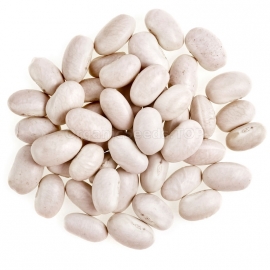
«Dryad» - Organic Bean Seeds
1.39 €
Grow this great bean for a really versatile, dual purpose plant. It produces straight and elegant, green, flat pods that mature and fatten to a shade of pale yellow. Each pod holds 4 or 6 soft skinned beans that you can cook fresh or dry for winter use.
-
Heirloom Bean «Dryad»
Grow this great bean for a really versatile, dual purpose plant. It produces straight and elegant, green, flat pods that mature and fatten to a shade of pale yellow.
Each pod holds 4 or 6 soft skinned beans that you can cook fresh or dry for winter use, the soft skin aids digestion and cooking. Disease resistant.
How to Plant
Amend the soil with compost before planting. Bush beans are grown differently than pole beans. Sow bush bean seeds 1 inch deep, spaced 2- to 3-inches apart in rows, 2 feet apart. Thin to 4- to 6-inches apart after the true leaves form. Pole beans are planted on 8-foot tall poles arranged in a row or a tepee. Plant 2 to 3 seeds spaced evenly around each pole. Pole beans naturally want to twine up the poles. You can also grow bush and pole varieties in containers in smaller spaces. Trellis pole beans with wire or twine hung from a porch ceiling or roof.
Fava beans are the exception in the bean family, but well adapted to our cool spring and fall growing conditions. Plant these as you would bush beans, but since the plants can grow 3- to 4-feet tall, trellis or stake the rows to keep the plants from flopping over.
If planting pole beans in the tepee shape, consider planting lettuce, or mesclun mix or radishes under the tepee. These quick maturing veggies will grow and mature before the pole beans grow up to shade them. It’s a great space saving tip in a small garden.
Consider planting successive crops of bush beans until early July spaced two weeks apart. This will insure a continuous harvest throughout the summer.
